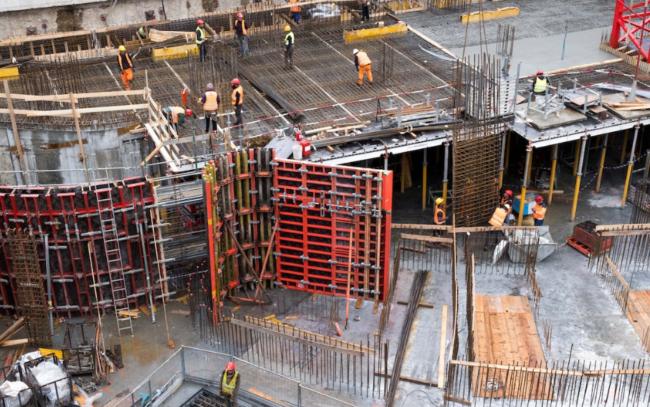In the rapidly evolving construction industry, the importance of innovative scaffolding solutions cannot be overstated. Scaffolding is not just a temporary structure; it’s a pivotal component in ensuring safety, efficiency, and precision in various construction and renovation projects.
This article delves into the intricate world of modern scaffolding, exploring how these structures have transformed from mere support systems to sophisticated tools integral to modern construction.
The Evolution of Scaffolding: A Historical Perspective
Scaffolding, as a concept, has been around since ancient times, used in the construction of everything from small buildings to colossal monuments. However, the traditional scaffolding systems were often cumbersome, time-consuming to erect, and not always safe. The evolution of scaffolding has seen the introduction of materials like aluminum and steel, which have revolutionised the industry. These materials have allowed for more lightweight, durable, and flexible scaffolding systems, adapting to the unique demands of various construction sites.
Safety Innovations in Modern Scaffolding
Safety is paramount in any construction project, and modern scaffolding solutions have been at the forefront of incorporating safety features. Innovations like guard rails, non-slip platforms, and advanced locking mechanisms have significantly reduced the risks associated with working at heights. Additionally, modern scaffolding designs allow for easier and safer movement of workers and materials, reducing the likelihood of accidents and injuries.
Scaffolding in Complex Construction Projects
One of the significant advancements in modern scaffolding is its adaptability to complex construction projects. For instance, in the restoration of historical buildings, scaffolding must be designed to support delicate structures without causing damage. This adaptability extends to projects such as skyscrapers and bridges, where traditional scaffolding methods would be impractical or impossible. In these scenarios, custom-designed scaffold solutions play a crucial role in providing the necessary support and access while ensuring the integrity of the structure.
Environmental Considerations and Sustainability
The modern construction industry is increasingly focusing on sustainability and environmental impact. Modern scaffolding solutions have adapted to this shift by incorporating eco-friendly materials and practices. The reuse and recycling of scaffolding materials, coupled with more energy-efficient manufacturing processes, demonstrate the industry’s commitment to reducing its environmental footprint.
Training and Professional Development in Scaffolding
With the complexity of modern scaffolding systems, there’s an increased need for skilled professionals who can safely and effectively manage these structures. Training programs and certifications have become more specialised, focusing on the latest technologies and safety protocols in scaffolding. This professional development ensures that the workforce is equipped with the knowledge and skills necessary for the safe and efficient use of modern scaffolding systems.
The Future of Scaffolding: Trends and Innovations
Looking ahead, the scaffolding industry is set to witness more technological advancements. The integration of digital technologies, like 3D modeling and virtual reality, offers new possibilities for planning and visualising scaffolding structures. Additionally, the trend towards modular and mobile scaffolding systems indicates a future where flexibility and efficiency are at the core of scaffolding design.
Conclusion
Modern scaffolding has transcended its traditional role, becoming an indispensable tool in the construction industry. Its evolution reflects the broader trends in construction: a focus on safety, efficiency, adaptability, and sustainability. As construction projects continue to grow in complexity and scale, the role of sophisticated scaffolding solutions will become even more crucial. For those interested in further exploring this topic, an informative read can be found in the article discussing current trends in construction technology. This continuous innovation and adaptation make modern scaffolding not just a support structure, but a cornerstone of successful construction projects.
